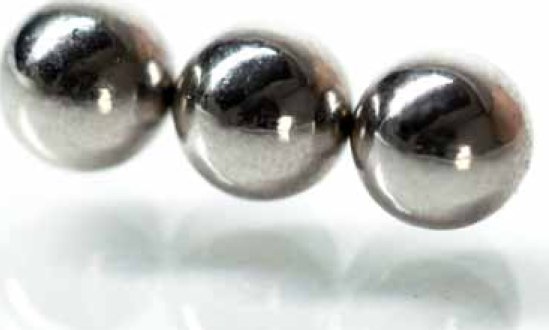Neodymium is a soft, silvery metal that tarnishes easily, but it is what it does that is important, not how it looks. According to some, this element is more valuable than gold. Until relatively recently neodymium was just another one of the 16 rare earth elements (REEs) on the periodic table. However, this group of elements has been growing rapidly to the point that, according to a British Geological Survey in 2011, the REEs are the fifth most at-risk group of elements. Neodymium is one of the many materials that is driving the future of our products because of what it contributes to a vast range of industries.
This boom in the use of REEs is born from a succession of devices, mainly centred around renewable energy, where they are used for making highly efficient motors and other new technologies including smart phones. One of the most significant applications areas is in magnets, with neodymium, along with cerium, one of the most popular REEs, accounting for 30 per cent of the magnets used. In this field, neodymium is often alloyed to create super-strong magnets known as rare earth magnets. Magnets may not initially strike you as a major market but a succession of devices, including smart phones and X-ray machines, rely on their specific properties. It is for this reason that a huge amount of research is being carried out to try and find synthetic alternatives to what is the world’s most powerful magnet and could be one of the most significant materials in the future.
Image: Neodymium magnets

Key features
•Super magnetism at a low weight
•Loses its magnetism at high temperatures
•Can lower reflection in glass
Neodymium has become a strategic material: China has the monopoly on global production with 97% of the world’s supplies coming from China, largely from a single mine in Inner Mongolia. Currently, it has restrictions on its exports, which is causing a political situation with the rest of the industrial world and forcing new man-made neodymium to be developed.
Cost
£51 ($80) per kg.
Sustainability issues
Over-mining is resulting in short supply of these rare elements. Also, according to some reports, the mining process used to extract neodymium can lead to radioactive waste leaks.
Production
Neodymium is generally bought as magnets, which are made by a sintered or bonded magnet process, for a range of uses.
Typical applications
Each Prius car uses around 1 kg (2½ lb) of neodymium in its electric motor. Another area of application is in wind turbines in the form of magnets. Neodymium has the ability to reduce glare in glass and is used in car windows for lower reflectivity. It is also used in glass for low-energy lightbulbs, and its spectral qualities, when used in glass, enhance the colour of TV screens. In mobile phones it is used to create the vibrate function and magnets for earphones. One of the derivatives of neodymium is a form of glass (also known as Alexandrite glass), which changes colour according to different lighting conditions. The glass appears lilac in natural sunlight or yellow artificial light, and blue in fluorescent and white light.
Derivatives
Neodymium glass.
| + | – |
|
–Source of renewable energy –Can reduce glare in glass –Growing range of applications |
–Limited availability –Mining causes significant environmental impact |
